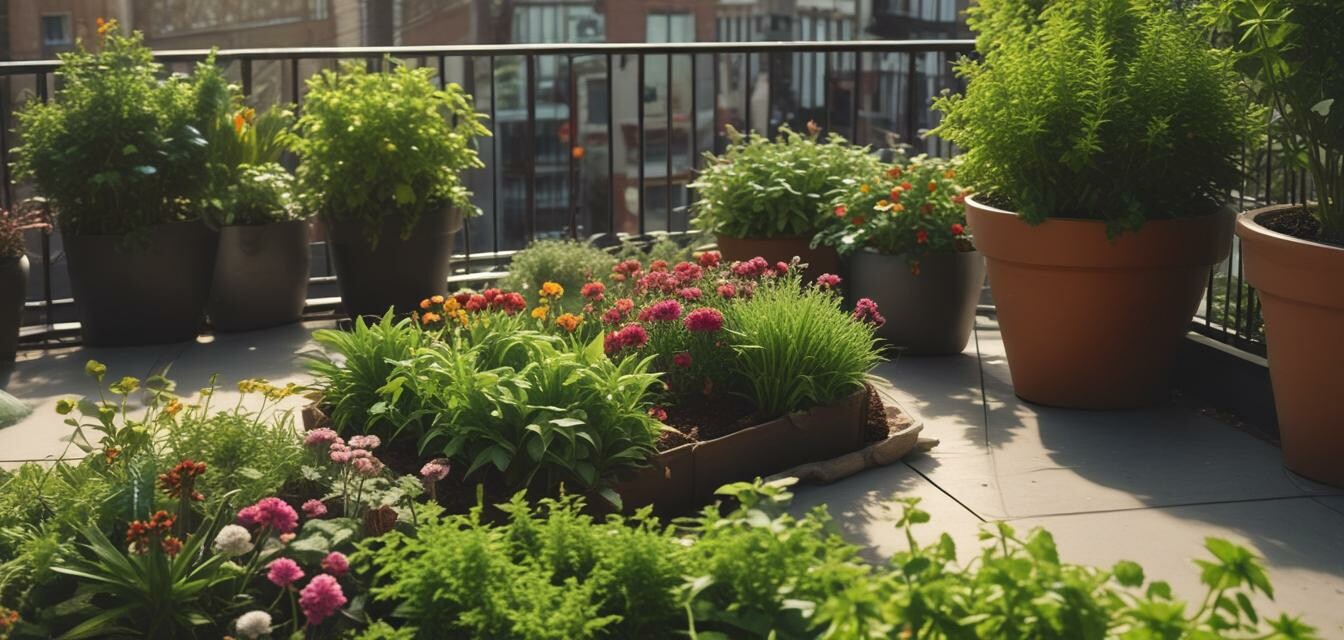
How to create companion planting strategies
Key Takeaways
- Companion planting can maximize space and boost plant health.
- Understanding plant relationships is key to successful companion planting.
- Utilizing herbs and flowers can deter pests and attract beneficial insects.
- Container gardens can benefit greatly from strategic plant pairings.
- Regular monitoring and adjustments can help optimize your balcony garden.
Companion planting is a great technique for those with limited gardening space, especially on urban balconies. It involves pairing plants that benefit each other, promoting healthier growth and pest control. This article will provide practical strategies to get the most out of your compact garden, transforming it into a lush oasis.
Understanding companion planting
Before diving into strategies, it’s essential to understand what companion planting is. Essentially, it’s the practice of growing different plants together for mutual benefit. This could mean enhancing flavor, deterring pests, or maximizing space effectiveness. By understanding how different plants interact, you can create a favorable environment for growth.
Benefits of companion planting
- Enhanced growth: Certain plants can stimulate the growth of others.
- Pest control: Some plants repel pests, protecting neighboring plants.
- Soil enrichment: Leguminous plants can fix nitrogen in the soil, improving soil quality.
- Efficient space usage: Taller plants can provide shade for shorter ones.
Popular companion plant pairings
| Plant A | Plant B | Benefits |
|---|---|---|
| Tomatoes | Basil | Enhances flavor and repels pests |
| Radishes | Spinach | Creates shade and optimizes space |
| Carrots | Onions | Deters carrot flies |
| Beans | Corn | Beans provide nitrogen; corn offers support |
By strategically pairing plants, you can maximize growth potential and enhance resilience against pests. A good rule of thumb is to plant herbs or flowers like marigolds or nasturtiums alongside vegetables, as they attract beneficial insects and repel harmful pests.
Container gardening ideas
When you’re working with a balcony garden, container gardening is often the best approach. Below are some ideas for creating effective companion planting arrangements in containers:
- Herb container: Mix basil, parsley, and chives.
- Vegetable mix: Plant tomatoes with peppers and onions.
- Flower and veggie combo: Integrate flowers like calendula with lettuce or spinach.
- Focus on heights: Use tall plants like peas on trellises with shorter herbs below.
By considering the growth habits and light requirements of your plants, you'll be able to optimize your space effectively. Explore container plants that work well for your setup, ensuring vibrant growth.
Pest management through companion planting
Pest management is one of the most significant advantages of companion planting. By strategically pairing plants that deter pests, you reduce the need for chemical interventions. For instance:
- Nasturtiums: Act as a trap crop for aphids, protecting your other plants.
- Marigolds: Deter nematodes and other harmful insects.
- Chives: Can repel aphids and other pests, while being beneficial to nearby plants.
Care and maintenance tips
Tips for beginners
- Start small: Learn which plant combinations work well before expanding.
- Keep a gardening journal: Track what works and what doesn’t for future reference.
- Adjust as necessary: Be flexible and change plant pairings if something isn’t thriving.
- Always check for pests: Early detection can prevent larger problems later.
Remember, the goal of companion planting is to create a healthy ecosystem within your balcony garden. By monitoring your plants and being responsive to their needs, you’ll enhance not only their growth but also your gardening experience overall.
Conclusion
Companion planting can transform your balcony garden into a thriving retreat. By understanding plant relationships and making strategic pairings, you’ll be able to maximize your gardening space while enhancing plant health. Don't hesitate to experiment with different combinations and monitor their success. Each attempt is a step towards creating your perfect urban oasis!
For more gardening advice and resources, check out our Gardening Tips.
Pros
- Increases productivity in small spaces
- Supports natural pest control
- Greater variety of plants can be cultivated
- Healthier growth from positive interactions
Cons
- Requires knowledge of plant relationships
- May need more trial and error
- Some plants may compete for resources
- Space limitations may restrict selections